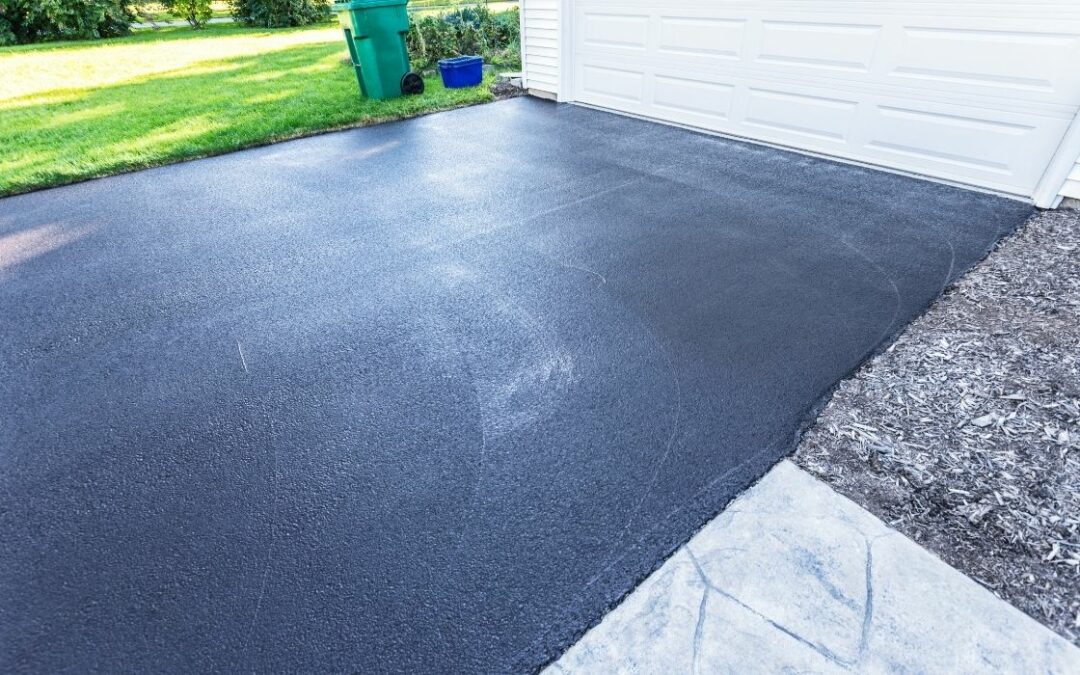Discover the Power of Commercial Car Park Paving and Asphalt Sealing
Discover the Power of Commercial Car Park Paving and Asphalt Sealing
Blog Article
Warm Mix Asphalt: A Lasting Option for Sidewalk
Warm Mix Asphalt (HMA) has actually emerged as a leading sustainable choice for pavement solutions, offering a myriad of innovative technologies and environmental benefits. As the need for green construction techniques grows, discovering the subtleties of HMA's sustainability can offer valuable understandings into the future of sidewalk options.
Environmental Advantages of Hot Mix Asphalt

Furthermore, Warm Mix Asphalt assists to mitigate metropolitan heat island results. Its dark color absorbs sunshine, minimizing the amount of warm reflected back right into the ambience compared to lighter-colored sidewalks. This can lower ambient temperature levels in city areas, lowering the demand for cooling and ultimately lowering energy usage.
In enhancement, Hot Mix Asphalt adds to boosted stormwater administration. Its permeable nature permits water to recharge and infiltrate the pavement groundwater materials, lowering overflow and the danger of flooding. These ecological advantages make Hot Mix Asphalt a sustainable option for leading freeways and roadways.
Power Performance in HMA Production
Is energy efficiency an important factor in the production of Hot Mix Asphalt (HMA)? Energy plays a significant duty in the manufacturing of HMA, affecting both cost and ecological sustainability. One crucial element of energy performance in HMA production is the usage of cozy mix asphalt (WMA) technologies.
Moreover, innovations in plant modern technologies have actually led to more energy-efficient HMA manufacturing procedures. By optimizing energy use in HMA production, the industry can decrease its carbon impact while keeping top notch pavement materials.
Recyclability of Warm Mix Asphalt
The recyclability of Warm Mix Asphalt (HMA) is a critical facet of its sustainability and long-term environmental influence. HMA is one of the most recycled products in the United States, with over 100 million heaps of redeemed asphalt pavement (RAP) being reused every year in brand-new pavement building and construction. Recycling HMA provides numerous ecological benefits, such as minimizing the need for virgin materials, decreasing power consumption during manufacturing, and reducing the amount of waste sent out to land fills.
The procedure of reusing HMA involves milling the existing pavement, crushing it into smaller sized items, and blending it with brand-new accumulation and asphalt binder to develop a recycled mix. This recycled mix can frequently carry out in addition to and even far better than conventional HMA, while needing less resources and generating reduced greenhouse gas exhausts. By incorporating RAP into new pavement projects, road agencies can save natural deposits, minimize prices, and decrease the ecological impact of roadway construction and maintenance activities. On the whole, the recyclability of HMA plays a substantial duty in promoting lasting practices within the sidewalk industry.

Long-Term Performance of HMA
Asphalt sidewalks demonstrate toughness and durability over a prolonged duration, reflecting the long-term efficiency of Warm Mix Asphalt (HMA) The longevity of HMA can be credited to its capability to withstand heavy web traffic tons, extreme weather, and the effects of aging. Studies have shown that properly designed and properly constructed HMA sidewalks can last for two decades or even more with normal upkeep. The trick to making the most of the long-lasting performance of HMA depends on using top quality materials, complying with finest methods in building and construction, and implementing effective maintenance strategies. Proper water drainage, regular examinations, and prompt repair work are vital for protecting the architectural stability of HMA pavements gradually. In addition, advancements in HMA technology, such as using polymer-modified binders and warm mix asphalt, have further enhanced the toughness and longevity of HMA sidewalks. By focusing on top quality building and upkeep index practices, HMA proceeds to prove itself as a lasting and affordable solution for long-lasting pavement infrastructure.

HMA: Resilience and Sustainability
Demonstrating both durability and sustainability, Warm Mix Asphalt (HMA) has actually ended up being a cornerstone in the construction of resilient pavement facilities - hot mix asphalt. HMA's longevity comes from its ability to withstand heavy tons, harsh climate condition, and high website traffic volumes, making it a trusted option for highways, highways, and airport runways. The make-up of HMA, which normally includes accumulations, binder, and filler, plays an essential duty in enhancing its long life and resistance to damage
Moreover, HMA's sustainability depends on its recyclability and energy-efficient manufacturing process. The capability to recycle reclaimed asphalt sidewalk (RAP) in brand-new HMA mixes lowers the demand for virgin materials and minimizes the environmental influence of pavement building and description construction and upkeep. Additionally, the power efficiency of creating HMA lies in its reduced mixing temperatures compared to other sidewalk materials, leading to minimized power consumption and greenhouse gas emissions.
Final Thought
To conclude, hot mix asphalt (HMA) provides a lasting remedy for sidewalk with its eco-friendly qualities. HMA's recyclability, energy effectiveness in production, and long-lasting durability make it a green choice for road building. By saving all-natural sources, lowering waste, and decreasing greenhouse gas emissions, HMA plays an important function in advertising sustainability in framework growth. Its capacity to reduce city heat island results further highlights its importance in creating environmentally mindful and durable pavement systems.
HMA is one of the most recycled materials in the United States, with over 100 million tons of redeemed asphalt pavement (RAP) being reused each year in brand-new pavement building and construction.The procedure of recycling HMA entails grating the existing pavement, crushing it right into smaller pieces, and blending it with new accumulation and asphalt binder to develop look at here a recycled mix.Asphalt pavements demonstrate resilience and durability over a prolonged period, reflecting the lasting efficiency of Warm Mix Asphalt (HMA) In addition, innovations in HMA modern technology, such as the usage of polymer-modified binders and warm mix asphalt, have actually better improved the durability and longevity of HMA pavements. The capacity to reuse reclaimed asphalt pavement (RAP) in new HMA mixes reduces the need for virgin materials and decreases the ecological impact of sidewalk construction and maintenance.
Report this page